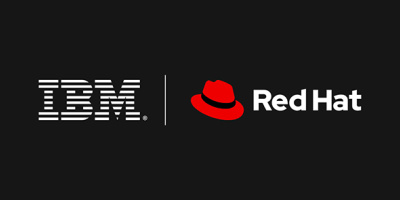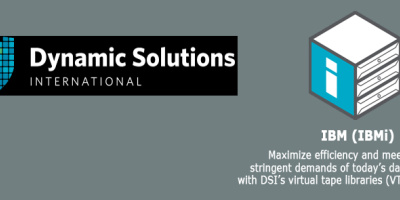Diskeeper highlights occasionally overlooked housekeeping on storage area networks.
Some things are good ideas from the start, and one of them is the storage area network (SAN). It has great success potential, especially potential for delivering on the promise that storage not directly attached to the server will bring advantages in provisioning and performance, reliability and availability. But these very real advantages don’t eliminate the need for IT maintenance actions to permit the best possible SAN performance and reliability.
“One of the most significant potential issues, and probably the most unrecognized, is defragmentation in a SAN storage system. With the implementation of a SAN in their storage environment, many Windows Server administrators believe that defragmentation, which they accepted and dealt with when using DASD storage, has gone away.” This statement, made by David Chernicoff of Windows IT Pro in his paper, “Maximize the Performance of Your Windows SAN Infrastructure,” points out a basic misstep that can be costly to IT administrators.
A SAN is agnostic when it comes to server operating systems. And the SAN appears to the operating system as locally attached storage. It is inherent in SAN storage that the operating system isn’t aware of the type of storage it uses and can’t optimize for a particular storage model.
This also means that SANs are not built to prevent or correct fragmentation. When you store information in your SAN, fragmentation at the file system level creates operating system overhead that interferes with file retrieval. These events are not caused by the SAN, and it’s outside the scope of your SAN to do anything about them.
Storage administrators can fail to consider this when they run into reduced efficiency. When they notice performance problems, many administrators add additional storage, assuming that a lack of free space is causing slowdowns. They fail to consider that both performance and reliability are often affected by the fragmentation that occurs when Windows Server writes data to any storage ? and that’s not just DASD or NAS, but also SAN.
This fragmentation often shows up as reduced application performance. Application response time begins to increase, it takes longer to load files, and applications loaded from the storage take longer to launch. Your IT team can receive help desk calls with complaints about a variety of supposed problems, when the real problem is that fragmentation is causing data manipulation times to increase to the point where the delays affect the user.
Since it isn’t a SAN function to manage fragmentation, it’s important to address the fragmentation at its source. Of course, the ideal solution to this phenomenon would be to prevent it. That would mean writing to the SAN using technology that minimizes fragmentation as the data writes, so your system would be passing fewer, larger disk I/Os to the SAN. You would thus reduce operating overhead and raise your I/O efficiency.
Defrag has been automated for years by Diskeeper Corporation defrag applications for systems ranging from individual workstations to enterprise servers. Today Diskeeper 2010 with IntelliWrite technology takes defrag a step further by preventing fragmentation from happening in the first place. Its proactive defrag is much easier on the budget than throwing storage expansion dollars at your SAN performance issues.





















 More than ever, there is a demand for IT to deliver innovation. Your IBM i has been an essential part of your business operations for years. However, your organization may struggle to maintain the current system and implement new projects. The thousands of customers we've worked with and surveyed state that expectations regarding the digital footprint and vision of the company are not aligned with the current IT environment.
More than ever, there is a demand for IT to deliver innovation. Your IBM i has been an essential part of your business operations for years. However, your organization may struggle to maintain the current system and implement new projects. The thousands of customers we've worked with and surveyed state that expectations regarding the digital footprint and vision of the company are not aligned with the current IT environment. TRY the one package that solves all your document design and printing challenges on all your platforms. Produce bar code labels, electronic forms, ad hoc reports, and RFID tags – without programming! MarkMagic is the only document design and print solution that combines report writing, WYSIWYG label and forms design, and conditional printing in one integrated product. Make sure your data survives when catastrophe hits. Request your trial now! Request Now.
TRY the one package that solves all your document design and printing challenges on all your platforms. Produce bar code labels, electronic forms, ad hoc reports, and RFID tags – without programming! MarkMagic is the only document design and print solution that combines report writing, WYSIWYG label and forms design, and conditional printing in one integrated product. Make sure your data survives when catastrophe hits. Request your trial now! Request Now. Forms of ransomware has been around for over 30 years, and with more and more organizations suffering attacks each year, it continues to endure. What has made ransomware such a durable threat and what is the best way to combat it? In order to prevent ransomware, organizations must first understand how it works.
Forms of ransomware has been around for over 30 years, and with more and more organizations suffering attacks each year, it continues to endure. What has made ransomware such a durable threat and what is the best way to combat it? In order to prevent ransomware, organizations must first understand how it works. Disaster protection is vital to every business. Yet, it often consists of patched together procedures that are prone to error. From automatic backups to data encryption to media management, Robot automates the routine (yet often complex) tasks of iSeries backup and recovery, saving you time and money and making the process safer and more reliable. Automate your backups with the Robot Backup and Recovery Solution. Key features include:
Disaster protection is vital to every business. Yet, it often consists of patched together procedures that are prone to error. From automatic backups to data encryption to media management, Robot automates the routine (yet often complex) tasks of iSeries backup and recovery, saving you time and money and making the process safer and more reliable. Automate your backups with the Robot Backup and Recovery Solution. Key features include: Business users want new applications now. Market and regulatory pressures require faster application updates and delivery into production. Your IBM i developers may be approaching retirement, and you see no sure way to fill their positions with experienced developers. In addition, you may be caught between maintaining your existing applications and the uncertainty of moving to something new.
Business users want new applications now. Market and regulatory pressures require faster application updates and delivery into production. Your IBM i developers may be approaching retirement, and you see no sure way to fill their positions with experienced developers. In addition, you may be caught between maintaining your existing applications and the uncertainty of moving to something new. IT managers hoping to find new IBM i talent are discovering that the pool of experienced RPG programmers and operators or administrators with intimate knowledge of the operating system and the applications that run on it is small. This begs the question: How will you manage the platform that supports such a big part of your business? This guide offers strategies and software suggestions to help you plan IT staffing and resources and smooth the transition after your AS/400 talent retires. Read on to learn:
IT managers hoping to find new IBM i talent are discovering that the pool of experienced RPG programmers and operators or administrators with intimate knowledge of the operating system and the applications that run on it is small. This begs the question: How will you manage the platform that supports such a big part of your business? This guide offers strategies and software suggestions to help you plan IT staffing and resources and smooth the transition after your AS/400 talent retires. Read on to learn:
LATEST COMMENTS
MC Press Online